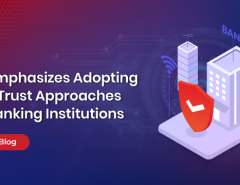Software developers ensure that there are no security gaps when they release a new version of their software, be it an application or an operating system or any other kind of software. However, it is impossible to design a software so perfect that it has no gaps. Despite the best effort of the creators, a few defects or gaps remain which could be a potential vulnerability of the system right on the day of its launch to sometime in future. These unintentional security gaps which are unknown to the creators are known as zero-day vulnerabilities. Zero-day refers to that day when the software maker comes to know of the system’s vulnerability for the first time. Up until then, hackers may take advantage of this gap to install malicious software on the devices, popularly known as zero-day exploit.
Source of Zero-days
The zero-day vulnerability is unknown to both the creators of the software as well as cybersecurity software makers like antivirus and firewall creators. After the software is released, the vulnerability is discovered by the hackers either by usage or by actively looking for gaps that can be exploited. Often, the hackers use the security hole for a while, before the legitimate users or creators of the software come to know about it. It is either identified after the users observe some anomalous behavior or found by the creator during subsequent development of the software. The most common zero-day attacks happen on browsers, and email clients as these are the most commonly used software today.
Read More: A single infected computer can cost your business millions of dollars, know how to save
Recognizing Zero-day attack
A zero-day vulnerability is like any other software defect. There is no standard method or process of identifying it. It shows up during use or comes to light due to detection of an ongoing hack. However, with advancements in security software, it is easier to identify these gaps much earlier. The security applications that track the behavior of other applications, to identify anomalous or malicious activity, can highlight possible vulnerabilities. Artificial Intelligence based security software is getting capable of identifying gaps before criminals can use them to break in.
Fixing the Zero-day vulnerability
Zero-day vulnerabilities are inside the software and do not occur due to an issue with the user. These need to be fixed by the software makers themselves. The best thing a user can do is to install all patches and upgrades that are released by the software maker. Users can also help by reporting to the creator, any vulnerability that comes to their attention. After all, users are in the best position to know which gap can or is harming them. Other than that, state of the art cybersecurity software and data loss prevention software should be used to ensure best possible protection for organization’s cyber assets.
Protecting against zero-day vulnerability
While it may seem that there’s nothing you can do about zero-day, there are still precautions which you can take. Using common sense and following safe cyber practices can always protect the organization against attacks. Follow some of the steps mentioned below to build a layer of protection against software vulnerabilities.
- Always check for and install latest software patches and upgrades. Many commercial software can automatically check, authenticate and install updates across all the computers in the organization.
- Follow safe browsing practices. Implement network control to bar social media sites and other sites that are not required for your business.
- Encrypt all data, whether stationary or dynamic, as it is the best defence against theft or leakage.
- Use state of the art cybersecurity software to protect enterprise network and all devices on it. Implement integrated network management software that can identify the devices which are not compliant with the organization’s security policy.
- Educate employees and other users to follow safe online practices, not to connect to the unsecured network and always stay vigilant.
Zero-day vulnerabilities are not known until they show themselves. However, it does not mean that user is totally helpless against them. By following safe online practices and using a state of art security software, the dangers of zero-day vulnerabilities can be contained.
As an IT security partner for your business, Seqrite provides comprehensive endpoint security from advanced cyber threats. To know more, visit our website or




